Weekly Current Affairs (15th to 24th August 2025) | Weekly Current Affairs - UPSC PDF Download
GS3/Environment
Uses of Wastewater Surveillance
Why in News?
The Indian Council of Medical Research (ICMR) is set to launch a wastewater surveillance initiative targeting 10 viruses across 50 cities within the next six months. Currently, the program is operational in five cities and aims to identify early signs of virus spread and growth trends, facilitating timely public health interventions.
Key Takeaways
- The ICMR will scale up wastewater surveillance to monitor various pathogens.
- Current focus includes COVID-19 and polio, with plans to track additional diseases linked to fever, diarrhea, and respiratory distress.
Additional Details
- About Wastewater:Wastewater refers to any water that has been impacted by human activities, originating from sources such as households, industries, and agriculture. It is essential to treat this used water before it can be safely released or reused.
- The ICMR's expanded wastewater and environmental surveillance (WES) initiative aims to detect early increases in virus load in communities, thus enhancing public health responses.
- The initiative will also include monitoring for the Avian Influenza Virus (AIV) in regions prone to outbreaks, establishing an early warning system.
- The growing emergence of pathogens in India is attributed to factors like population growth, urbanization, and environmental changes, necessitating such surveillance strategies.
- Wastewater-Based Epidemiology (WBE):WBE has gained prominence as a crucial tool for the early detection of disease outbreaks, especially post-COVID-19, providing valuable insights into community-level infection trends.
- This method is cost-effective and non-invasive, covering large populations and aiding in the identification of transmission hotspots, thus facilitating efficient resource allocation for containment.
- According to the CDC, even asymptomatic individuals shed pathogens through routine activities, which can be detected in wastewater samples collected before treatment.
- Within a timeframe of five to seven days, labs can uncover infections circulating within the community, enabling public health officials to implement appropriate interventions.
- Beyond disease detection, wastewater surveillance assists in identifying land-based pollution sources, thereby contributing to the protection of ecosystems.
- The United Nations Environment Programme (UNEP) advocates for expanding wastewater surveillance practices to enhance water quality monitoring.
- The World Health Organization (WHO) is also engaged in strengthening global capacities for wastewater surveillance, emphasizing its significance for public health and environmental sustainability.
In summary, wastewater surveillance is emerging as a vital strategy for early detection of infectious diseases, allowing for proactive public health measures and contributing to environmental management.
GS2/ Polity and Governance
Removal of Ministers Under Serious Charges
Why is it News?
- The Central Government has put forth the 130th Constitution (Amendment) Bill, 2025 in the Lok Sabha. This bill aims to remove central and state Ministers who are arrested for 30 consecutive days on serious criminal charges.
130th Constitution (Amendment) Bill, 2025
- Amendments: The Bill suggests changes to Articles 75, 164, and 239AA of the Constitution. These articles pertain to the Union Council of Ministers, Council of Ministers in the states, and Ministers in Union Territories, respectively.
- Key clause: The Bill includes a crucial clause stating that if a Minister (including Chief Ministers and the Prime Minister) is arrested and detained for 30 consecutive days for offences punishable by five years or more, they must be removed by the President on the Prime Minister’s advice. This removal is reversible upon the Minister’s release from custody.
- Objective: The aim of the Bill is to uphold constitutional morality and good governance. It ensures that ministers facing serious allegations cannot continue in office, thereby maintaining public trust.
Current Legal Framework for Removing Detained Ministers
- No Automatic Removal: Currently, there is no automatic provision for removing a Minister upon their arrest.
- Disqualification Criteria: Under Section 8 of the Representation of the People Act, 1951 (RPA), legislators, including Ministers, are disqualified only after a conviction for certain offences carrying a minimum imprisonment of two years.
- Prevention of Corruption Act: Section 8(1) of the RPA, 1951, disqualifies a legislator convicted under the Prevention of Corruption Act, 1988, for six years if punished with a fine. If sentenced to imprisonment, the disqualification lasts for the entire imprisonment period plus six years after release.
- Presumption of Innocence: The presumption of innocence applies until conviction; mere arrest does not trigger removal.
Key Judicial Pronouncements Regarding Ministerial Accountability
- Public Interest Foundation PIL (2018): The Supreme Court ruled that it cannot legislate new grounds for disqualification beyond Parliament’s provisions. Parliament alone has the authority to make laws on disqualification.
- Manoj Narula v Union of India (2014): The Supreme Court stated there is no legal barrier to appointing Ministers with criminal records but advised against selecting those charged with serious offences.
- V Senthil Balaji Case (2025): The Supreme Court directed Tamil Nadu Minister V. Senthil Balaji to choose between freedom or office after noting it had been misled by his reappointment post-bail in an alleged cash-for-jobs scam.
- Arvind Kejriwal Case (2024): The Supreme Court granted Arvind Kejriwal bail in a money laundering case but barred him from official duties. He later voluntarily resigned from office.
Need for New Provision for Removal of Detained Ministers
- Combatting Criminalisation of Politics: There is a growing concern about the criminalisation of politics, as many elected representatives have pending criminal cases. The current legal framework allows Ministers to remain in office until convicted, which can take years. This erodes public trust in the political system.
- Data on MLAs: A report by the Association for Democratic Reforms (ADR) in 2025 highlighted that 45% of the analysed MLAs have declared criminal cases, with 29% facing serious charges like murder, kidnapping, and crimes against women. This data underscores the urgent need for reforms to address the issue of criminality in politics.
- Enhancing Accountability: Ministers hold significant executive power and can influence investigations. Given the slow pace of judicial processes in India, there is a risk that Ministers under investigation may serve substantial terms before being convicted. This undermines the principle of accountability.
- Need for Mechanism: There is a pressing need for a mechanism that ensures Ministers detained for serious offences cannot continue in office unchecked. Such a mechanism would strengthen accountability and uphold the integrity of the government.
- Restoring Public Confidence: Ensuring that Ministers facing serious charges are temporarily removed from office would help restore public confidence in governance. It would signal a commitment to ethical governance and the rule of law.
Measures Needed for Strengthening Ministerial Accountability
- Legal and Constitutional Provisions: Introduce clear rules for the removal or suspension of Ministers facing serious criminal charges, even during investigation or detention. This could include disqualification when charges are framed for offences punishable by up to five years’ imprisonment.
- Transparent Appointment Process: Political parties should exercise due diligence when selecting Ministers, avoiding candidates with criminal backgrounds. Implement guidelines for Prime Ministers and Chief Ministers to prioritize integrity in ministerial appointments.
- Parliamentary Oversight: Strengthen the role of parliamentary committees and ethics panels to monitor Ministers’ conduct. Mandate periodic disclosures of assets, liabilities, and pending cases to Parliament for scrutiny.
- Ethical Governance: Implement a binding ministerial code of conduct that emphasizes transparency, integrity, and public service. Encourage political parties to adopt internal accountability mechanisms and enforce ethical standards.
GS2/Government Schemes
Kerala ‘First’ Digitally Literate State in India
Why in News?
Kerala has achieved the status of the first fully digitally literate state in India. This accomplishment is a significant step towards closing the digital divide in the country.
Digi Keralam Project
- The Digi Keralam Project aimed to enhance digital literacy among senior citizens, homemakers, and other groups who were previously excluded from digital access.
- It involved the use of youth volunteers and the K-SMART platform to provide online access services, thereby improving inclusion and governance.
Akshaya Project
- The Akshaya project, launched in 2002 by then President A.P.J. Abdul Kalam, aimed to make at least one member of every family digitally literate in Kerala.
- This initiative was designed to promote IT access and improve citizen service delivery throughout the state.
Digital Literacy in India
Digital literacy refers to the ability of individuals and communities to understand and use digital technologies for meaningful purposes in their daily lives.
- According to the Central Board for Workers Education, only 38% of households in India are digitally literate, with urban areas at 61% and rural areas at 25%.
Initiatives Promoting Digital Literacy
- The Government of India launched the National Digital Literacy Mission (NDLM) and Digital Saksharta Abhiyan (DISHA) to promote digital literacy, targeting 52.50 lakh beneficiaries across the country.
- A total of 53.67 lakh beneficiaries were trained under these schemes, with 42% from rural areas. These schemes have now been closed.
- Pradhan Mantri Gramin Digital Saksharta Abhiyan (PMGDISHA) aims to promote digital literacy in rural India, with 6.39 crore individuals trained nationwide by March 2024.
GS1/History & Culture
UGC Draft Curriculum Highlights Ancient Wisdom in Higher Education
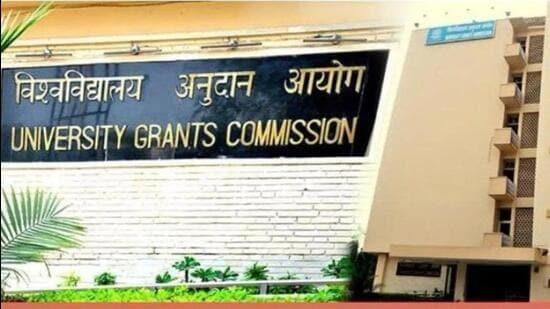 Why in the News?
Why in the News?
The University Grants Commission (UGC) has released a draft curriculum framework that integrates Indian Knowledge Systems (IKS) into undergraduate courses. This initiative has stirred discussions regarding the balance between traditional wisdom and academic rigor.
Key Takeaways
- The draft curriculum emphasizes the inclusion of Indian Knowledge Systems across various undergraduate disciplines.
- It aims to align higher education with India's cultural and intellectual heritage, as promoted by the National Education Policy (NEP) 2020.
- Stakeholder feedback is being sought on the proposed framework.
Additional Details
- Subject-wise Integration: Each academic discipline is encouraged to incorporate elements of Indian thought, blending traditional wisdom with modern educational outcomes.
- Mathematics: Proposed modules will include mandala geometry, yantras, and the study of temple architecture using āyādi ratios.
- Commerce: The curriculum will integrate Bhartiya philosophy and the Gurukul system, focusing on ethical leadership and sustainable practices.
- Economics: A focus on dharmic perspectives regarding wealth and trade ethics will contextualize economic studies within India's cultural traditions.
- Chemistry: Traditional fermented beverages will be studied alongside ancient concepts of the atom, merging historical insights with modern chemical education.
- Anthropology: Influential thinkers like Charaka and Sushruta will inform the curriculum, enriching the understanding of the relationship between nature and culture.
The draft curriculum represents a significant shift in India's educational philosophy. By embedding Indian Knowledge Systems into mainstream education, the UGC aims to decolonize curricula, promote indigenous heritage, and encourage ethical practices in various fields. If adopted, this framework could redefine higher education, ensuring that it is both culturally rooted and globally relevant. However, it remains essential to balance these ancient teachings with the principles of scientific inquiry and critical thinking.
GS2/International Relations
Alaskan Winds, India and the Trump-Putin Summit
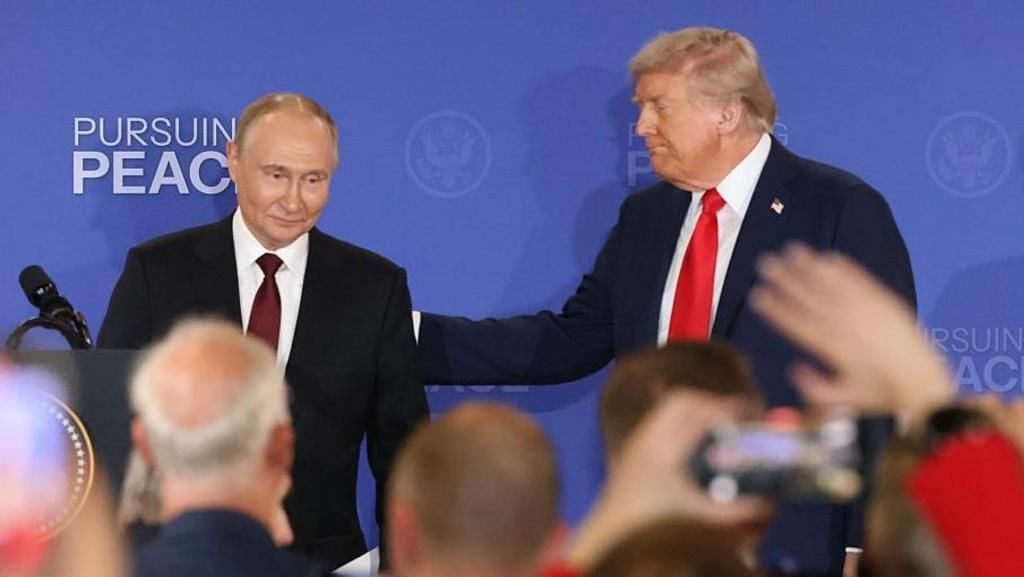 Why in News?
Why in News?
The recent meeting between U.S. President Donald Trump and Russian President Vladimir Putin on August 15, 2025, has been perceived as a pivotal moment regarding the ongoing Russia-Ukraine conflict. However, for India, this summit resulted in minimal advantages, highlighting its vulnerabilities and lack of influence in the U.S.-Russia discussions.
Key Takeaways
- The summit reinforced India's sense of vulnerability in U.S.-Russia relations.
- Expectations from the Modi government for relief from U.S. sanctions were unmet.
- Trump's policies appear to be driven more by political leverage over India than by consistent principles.
- India needs to rethink its diplomatic strategies to safeguard its interests.
Additional Details
- Outcome of the Summit: The Modi government had anticipated that improved U.S.-Russia relations might alleviate pressures on India regarding its ties with Moscow, particularly concerning sanctions on Russian oil imports and trade talks. However, the U.S. maintained its stringent stance against India, with officials emphasizing sanctions as a dual strategy to penalize both Russia and India.
- Strategic Autonomy: The sanctions imposed by the U.S. underline the risks of India deviating from its principle of adhering solely to UN-mandated sanctions, suggesting a need for India to uphold its economic independence and credibility.
- Lessons for New Delhi: The summit illustrates the dangers of prioritizing diplomatic appearances over substantive agreements. India needs to focus on establishing concrete frameworks and rebuilding bipartisan relations in Washington to navigate the complexities of international politics effectively.
- Future Engagements: Modi's upcoming diplomatic engagements in various countries present opportunities to strengthen alternative alliances and reduce dependency on U.S. approval.
In conclusion, the Alaska Summit serves as a reminder for India to ground its foreign policy in practical substance and strategic balance rather than getting swayed by high-profile diplomatic events. By doing so, India can better navigate the unpredictable dynamics of U.S. politics and protect its national interests.
GS3/Economy
Overhauling India’s Vocational Education and Training (VET) System - A Pathway to Viksit Bharat
Why in News?
The Prime Minister's Independence Day address on August 15 emphasized the need for reforms aimed at demand-driven growth, recalibrating GST, and enhancing productivity through education and skill development. Despite having a significant demographic advantage, India grapples with a low-skilled workforce, making vocational education essential for improving employability and productivity.
Key Takeaways
- India has over 14,000 Industrial Training Institutes (ITIs) with 25 lakh sanctioned seats.
- Actual enrolment in ITIs was only around 12 lakh in 2022, indicating just 48% utilization of available seats.
- The employment rate for ITI graduates was only 63% in 2018, compared to 80-90% in countries with robust VET systems like Germany and Singapore.
- Only 4% of the workforce in India is formally trained, significantly lower than international standards.
Challenges in India’s VET System
- Late integration in education system: VET in India is introduced after high school, limiting hands-on training time and employability skills orientation.
- Lack of academic progression: There are no defined pathways from VET to higher education, and no credit transfers exist between systems.
- Quality issues: Curricula are outdated and misaligned with industry needs, with over one-third of ITI instructor positions vacant due to limited training capacity.
- Weak public-private partnerships (PPPs): Limited engagement of private sector employers and inadequate support from MSMEs due to capacity constraints.
Learning from International Best Practices
- Integration in education system: In countries like Germany, VET is blended with school education through a dual system involving paid apprenticeships.
- Academic progression: Singapore provides clear pathways from VET to universities, ensuring VET is recognized both at post-secondary and tertiary levels.
- Perception and quality: Countries with effective VET systems employ industry-led curricula, high-quality instructors, and regular feedback mechanisms.
- Public-private partnerships (PPPs): Governments support VET institutions, while employers contribute to apprenticeship funding and curriculum design.
Reforms Needed in India
- Early integration of VET: Implement the National Education Policy (NEP) 2020 recommendations for VET at the school level.
- Pathways to higher education: Accelerate the National Credit Framework for academic progression and credit transfers.
- Improve quality and relevance: Align training with local industry demands and expand National Skill Training Institutes (NSTIs).
- Strengthen PPPs: Scale up involvement of Private Training Partners and engage MSMEs through CSR funding.
- Increase funding: India allocates only 3% of the education budget to VET, compared to 10-13% in Germany, Singapore, and Canada.
Recent Government Schemes
- Employment Linked Incentive (ELI) scheme: Offers incentives for employers and first-time EPFO-registered workers, although lacking skilling components.
- PM Internship Scheme: Provides one-year placements to youth in top companies but does not ensure pathways to permanent jobs.
- ITI Upgradation Scheme: Focuses on modernizing government ITIs in partnership with the industry, but does not guarantee quality training.
To effectively transform vocational education and training in India, a systemic overhaul is essential. This transformation should aim to make VET more attractive and effective, linking it with formal employment and opportunities for upward mobility. Ultimately, the goal is to turn VET into a pathway to quality jobs, crucial for realizing the vision of Viksit Bharat by 2047.
GS3/Economy
Inoperative PM Jan Dhan Accounts: A Concern
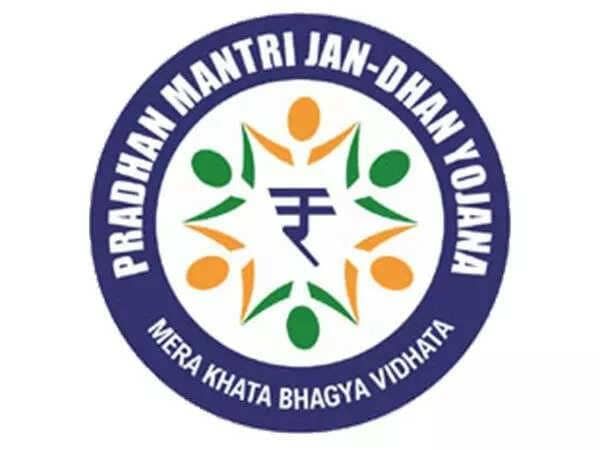 Why in News?
Why in News?
The Government has informed Parliament that 23% of the total 56.04 crore PM Jan Dhan Yojana accounts are currently inoperative. This raises concerns regarding financial inclusion and the effectiveness of the scheme.
Key Takeaways
- 23% of PM Jan Dhan Yojana accounts are inoperative.
- Scheme aims to enhance financial inclusion for the unbanked population.
About Pradhan Mantri Jan Dhan Yojana (PMJDY)
- Launch: Introduced in 2014 as the world's largest financial inclusion mission.
- Objective: To provide banking services to the unbanked, insurance to the unsecured, and credit to the unfunded.
- Accounts: Offers Basic Savings Bank Deposit (BSBD) accounts with zero balance, minimal paperwork, and e-KYC facility.
- Benefits: Includes a RuPay debit card with accident insurance, overdraft facility, micro-insurance, and pension coverage.
Key Features
- Access: Universal banking through bank branches and Business Correspondents.
- Overdraft: Up to ₹10,000 for eligible account holders.
- Insurance: Accident cover of ₹1 lakh (₹2 lakh for new accounts opened post-2018); life cover of ₹30,000 for accounts opened between August 2014–January 2015.
- Interoperability: Enabled via RuPay cards and Aadhaar-linked platforms.
- Post-2018 Expansion: Coverage now includes all unbanked adults, with enhanced overdraft limits and increased eligibility age from 60 to 65 years.
- Direct Benefit Transfers: Strengthened subsidy delivery through the JAM Trinity (Jan Dhan–Aadhaar–Mobile).
Did You Know?
- According to the Reserve Bank of India (RBI) guidelines (2009), an account is considered dormant if no transaction occurs for over two years.
UPSC Insight
Pradhan Mantri Jan-Dhan Yojana was launched to:
- (a) provide housing loans to poor people at cheaper interest rates
- (b) promote women’s Self-Help Groups in backward areas
- (c) promote financial inclusion in the country*
- (d) provide financial help to marginalized communities
This information highlights the importance of the PMJDY scheme in enhancing financial literacy and access to banking services in India.
GS2/Polity
The Constitution (130th Amendment) Bill, 2025
Why in News?
The Union Home Minister is preparing to introduce three significant bills in the Lok Sabha aimed at establishing a legal framework for the removal of the Prime Minister, Union Ministers, Chief Ministers, and Ministers in States and Union Territories (UTs) who are arrested and detained due to serious criminal charges.
Key Takeaways
- The three bills include the 130th Constitutional Amendment Bill, Jammu and Kashmir Reorganisation (Amendment) Bill, and Government of Union Territories (Amendment) Bill.
- The 130th Constitutional Amendment Bill specifically addresses the conditions under which leaders must resign if detained.
Additional Details
- Scope: The bill applies to the Prime Minister, Chief Ministers, and Ministers at the Union, State, and Union Territory levels.
- Grounds for Removal: A leader must resign if arrested and in custody for 30 consecutive days on charges punishable by five years or more.
- Reappointment: Leaders can be reappointed after their release from custody.
- Objective: To prevent prolonged tenures of arrested leaders in office, exemplified by cases like that of Delhi CM Arvind Kejriwal.
- Amendments to Articles:
- Article 75: Introduces a provision for the automatic resignation of Union Ministers if detained for serious offenses.
- Article 164: Similar provisions for Chief Ministers and State Ministers regarding automatic removal upon detention.
- Article 239AA: New Section 5A specifies that the CM and Ministers of Delhi cease office if detained for 30 days under serious charges.
- The rationale behind this bill is to ensure that office bearers maintain public trust and do not compromise governance during periods of detention.
This bill promotes the integrity of democracy by aligning ministerial positions with constitutional morality and accountability.
Consider the following statements:
- 1. According to the Constitution of India, a person who is eligible to vote can serve as a minister in a State for six months even if not a member of the State Legislature.
- 2. According to the Representation of People Act, 1951, a person convicted of a criminal offense and sentenced to imprisonment for five years is permanently disqualified from contesting elections, even after release.
Options: (a) 1 only (b) 2 only (c) Both 1 and 2 (d) Neither 1 nor 2
GS3/Environment
Snow Leopard
 Why in News?
Why in News?
A recent three-year camera trapping study has confirmed the year-round presence and breeding activities of snow leopards in Jammu & Kashmir, with a particular emphasis on the Kishtwar Himalayas.
Key Takeaways
- The snow leopard is a medium-sized big cat native to the rugged terrains of Central and South Asia.
- It is known for its adaptations to cold, mountainous environments, earning it the nickname "ghost of the mountains."
Additional Details
- Distribution:Snow leopards prefer steep, rugged terrains with rocky outcrops and ravines, typically found at elevations of 3,000-5,000 meters or higher in the Himalayas. They inhabit 12 countries, including:
- China
- Bhutan
- Nepal
- India
- Pakistan
- Russia
- Mongolia
- In India, snow leopards are primarily located in the high-altitude, cold, arid, and rugged terrains of Jammu & Kashmir, Himachal Pradesh, Uttarakhand, Sikkim, and Arunachal Pradesh.
- Features: The snow leopard has pale grey fur with dark rosettes, providing camouflage against rocky environments. It can grow to a length of about 7 feet (2.1 meters), with its tail accounting for nearly half of that length. This tail aids in balance during climbing and provides warmth when resting.
- Snow leopards are solitary animals, preferring to live alone except during mating or when raising young.
The conservation status of the snow leopard is classified as Vulnerable by the IUCN, listed in CITES Appendix I, and included in Schedule I of the Wildlife (Protection) Act of 1972.
GS2/International Relations
African Union (AU) and the Mercator Map Debate
Why in News?
The African Union (AU) has recently supported the Correct the Map campaign, which aims to replace the outdated 16th-century Mercator projection with more accurate mapping alternatives.
Key Takeaways
- The AU was established in 2002, replacing the Organisation of African Unity from 1963.
- It consists of 55 member countries across Africa and is headquartered in Addis Ababa, Ethiopia.
- The AU's vision is to create an integrated, prosperous, and peaceful Africa, led by its citizens.
- Agenda 2063 serves as the AU's blueprint for socio-economic growth and continental unity.
Additional Details
- About the African Union (AU):
- Establishment: Formed in 2002, the AU replaced the Organisation of African Unity.
- Membership: Comprises 55 African countries.
- Headquarters: Located in Addis Ababa, Ethiopia.
- Vision: “An Integrated, Prosperous, and Peaceful Africa, driven by its own citizens.”
- Agenda 2063: A blueprint for socio-economic growth and continental unity.
- Main Organs: Includes the Assembly, Executive Council, AU Commission, and Peace and Security Council.
- What is a Mercator Map?
- Creation: Developed by Gerardus Mercator in 1569.
- Projection: A cylindrical map featuring straight lines of longitude and latitude intersecting at 90 degrees.
- Purpose: Designed to assist sailors in plotting straight-line courses for navigation.
- Adoption: Became the standard map used in schools and atlases by the 19th century.
- Issues with the Mercator Map:
- Distortion: The map significantly enlarges high-latitude regions such as Europe and North America, while underrepresenting Africa and South America.
- Example: Greenland appears roughly equal in size to Africa, despite Africa being approximately 14 times larger.
- Colonial Bias: The Mercator projection reinforces narratives of Western dominance and diminishes Africa's size and significance.
- Impact: This distortion contributed to the marginalization and exploitation of African nations during colonial times.
- Alternatives: Projections like Gall-Peters (1970s) and Equal Earth (2018) present continents in more accurate proportions.
- AU Stand: The African Union advocates for the replacement of Mercator maps to restore Africa’s rightful representation on the global stage.
In summary, the endorsement of the Correct the Map campaign by the AU marks a significant step towards rectifying historical biases in cartography and promoting a more accurate representation of Africa in global contexts.
GS2/International Relations
Integrated Food Security Phase Classification (IPC) and Famine Declaration
Why in News?
The United Nations has officially announced a famine in Gaza, following an assessment by the Integrated Food Security Phase Classification (IPC) panel.
Key Takeaways
- The IPC is a global tool used to assess and classify food insecurity.
- The recent famine declaration in Gaza highlights the ongoing food crisis.
Additional Details
- What is IPC: The Integrated Food Security Phase Classification (IPC) is a standard method for assessing the severity of food insecurity, established in 2004 during the Somalia food crisis by the Famine Early Warning Systems Network (FEWS NET) and its partners.
- Coordination: The IPC is coordinated by the UN Food and Agriculture Organization (FAO) and aims to support early warnings, evidence-based decision-making, and coordinated responses from governments, UN agencies, NGOs, and donors.
- Partnership Model: The IPC incorporates collaboration among UN bodies, NGOs, academic institutions, and national governments.
- Five-Phase Classification System:
- Phase 1: Minimal
- Phase 2: Stressed
- Phase 3: Crisis
- Phase 4: Emergency
- Phase 5: Catastrophe/Famine
- Methodology: The IPC relies on evidence from food access, livelihoods, nutrition, and mortality, requiring technical consensus among analysts to ensure transparency and accuracy. It enables real-time assessments and 6-month forecasts to facilitate timely actions.
- Definition of Famine:Famine is classified as IPC Phase 5, the highest level of food insecurity, which is declared when:
- At least 20% of households face extreme food gaps.
- 30% of children under five suffer from acute malnutrition (wasting).
- The death rate is 2 adults or 4 children per 10,000 people per day.
- Purpose of Declaration: The declaration aims to mobilize international aid and emergency operations, trigger food, health, and logistics support, and raise global awareness and funding for urgent interventions.
- Past Declarations: Notable famine declarations have occurred in Somalia (2011), South Sudan (2017, 2020), and Darfur, Sudan (2024).
This current crisis emphasizes the importance of international cooperation and timely responses to prevent further deterioration of food security in affected regions.
GS3/Economy
India’s S&P Upgrade: Drivers and the Road Ahead
Why in News?
Recently, S&P Global Ratings upgraded India’s sovereign rating from BBB- to BBB, marking the country’s first upgrade in nearly two decades. This development is significant due to the long hiatus and its extensive implications for India’s economic position, investor confidence, and global credibility.
Key Takeaways
- India’s sovereign rating has improved, reflecting enhanced economic fundamentals.
- The upgrade is expected to lower borrowing costs and improve access to global capital markets.
- India's government has actively pursued higher ratings from global agencies for better economic recognition.
Additional Details
- S&P Global: A leading international credit rating agency that evaluates the creditworthiness of governments and corporations, providing independent assessments of financial risk.
- Importance of Credit Ratings: Credit ratings gauge a country's ability to repay borrowed funds, influencing borrowing costs and investor confidence.
- India’s Economic Reforms: The rating upgrade is supported by improvements in fiscal discipline and economic growth, with efforts to reduce the fiscal deficit from 9.2% of GDP in 2020-21 to a projected 4.4% by 2025-26.
- Inflation Management: S&P praised India’s management of inflation, with the headline rate falling to 1.55% in July 2025, enhancing investor confidence.
- Global Standing: India’s new rating places it alongside countries like Greece and Mexico, indicating that while it has made progress, there are still challenges ahead to reach higher ratings.
The upgrade signals improved financial credibility for India, with immediate benefits like lower borrowing costs and a stronger rupee. However, achieving a further upgrade will require addressing the structural fiscal deficit, which poses a significant challenge in the coming years.
GS3/Science and Technology
ICMR Introduces ‘CEREBO’ to Diagnose Brain Injury
Why in News?
The Indian Council of Medical Research (ICMR) has launched an innovative, indigenous device named CEREBO. This portable tool is designed for the rapid and radiation-free diagnosis of traumatic brain injuries (TBI), particularly aimed at enhancing healthcare access in emergency and rural settings.
Key Takeaways
- CEREBO is a handheld device that allows for quick diagnosis of brain injuries.
- It is developed using near-infrared spectroscopy and machine learning algorithms.
- The device is user-friendly, requiring minimal training for operation.
- It can detect intracranial bleeding and oedema in under a minute.
- The introduction of CEREBO aims to address the high mortality and morbidity rates associated with head injuries in India.
Additional Details
- CEREBO: A portable, non-invasive diagnostic tool that is radiation-free and safe for use on infants and pregnant women.
- Development and Collaboration: The device was developed through a collaborative effort involving ICMR, AIIMS Bhopal, NIMHANS Bengaluru, and others, ensuring clinical validation and regulatory approvals.
- Significance: CEREBO addresses the lack of accessibility to advanced imaging facilities in rural areas, reducing costs and improving speed in diagnosis.
- Public Health Impact: Early detection through this device can significantly reduce mortality rates and improve recovery outcomes for TBI patients.
In conclusion, CEREBO represents a significant advancement in the diagnosis and management of traumatic brain injuries in India. By providing a cost-effective and efficient alternative to traditional imaging methods, it aims to enhance emergency healthcare responses, particularly in underserved regions.
GS3/Science and Technology
MIT Research of Ionic Liquids (ILs)
Why in News?
Recent research led by MIT indicates that life may not be strictly dependent on liquid water. Instead, ionic liquids (ILs), which are salts that remain liquid below 100°C, could potentially support life on rocky super-Earths characterized by volcanic activity and limited water availability.
Key Takeaways
- Ionic liquids (ILs) may serve as alternative solvents for life.
- Natural processes can produce ILs, suggesting their presence on other planets.
- Research findings expand our understanding of habitability in the universe.
Additional Details
- Ionic Liquids (ILs): These are salts that are liquid at temperatures below 100°C and are composed entirely of ions. They exhibit unique properties such as being non-volatile, non-flammable, and thermally stable, making them adaptable as hydrophobic or hydrophilic.
- Electrochemical Use: ILs are recognized as excellent electrolytes with wide electrochemical windows, making them valuable in various applications including synthesis, catalysis, and electrochemistry.
- Breakthrough Findings: The study demonstrated that life might survive using ILs instead of water, with sulfuric acid and nitrogen compounds possibly forming ILs naturally. This suggests that ILs could exist on rocky super-Earths with volcanic activity and thin atmospheres.
- Significance: The findings broaden the definition of habitability beyond traditional water-based models and suggest new chemical markers for detecting life on exoplanets. The research also emphasizes the importance of exploring Venus, where ILs may play a significant role in its chemistry.
This research fundamentally alters our understanding of where life might exist in the universe, implying that there may be more planets capable of hosting life than previously believed.
GS3/Science and Technology
Lunar Module Launch Vehicle (LMLV)
 Why in News?
Why in News?
The Indian Space Research Organisation (ISRO) is in the process of developing its heaviest rocket to date, the Lunar Module Launch Vehicle (LMLV), aimed at enhancing India's capabilities in space exploration.
Key Takeaways
- The LMLV is designed primarily for lunar exploration and aims to support India's first human mission to the Moon by 2040.
- This rocket will replace the Next Generation Launch Vehicle (NGLV) plan and will aid in the development of India's space station program.
- It will be as tall as a 40-storey building, significantly larger than the current LVM-3 model.
Additional Details
- Payload Capacity: The LMLV can carry up to 80 tonnes to Low Earth Orbit (LEO) and 27 tonnes to the Moon, making it suitable for human-rated spacecraft.
- Design:The vehicle is a partially reusable super heavy-lift rocket that consists of three stages:
- The first two stages utilize liquid propellants.
- The third stage operates on cryogenic propellant.
- It features strap-on boosters that are taller than the entire LVM-3 rocket and a total of 27 engines in the first stage (core plus boosters).
- Timeline: The LMLV is expected to be completed by 2035, demonstrating ISRO's commitment to advancing India's long-term space exploration goals.
Future missions planned using the LMLV include:
- Human Lunar Mission (2040 target): The LMLV will be capable of carrying crew modules weighing 18-20 tonnes for India's inaugural astronaut landing on the Moon.
- Bharatiya Antariksh Station (BAS): The LMLV will facilitate the deployment of heavy modules for India's planned five-module space station by 2035.
- Lunar Cargo Missions: It can transport approximately 27 tonnes to the Moon, aiding in logistics and infrastructure development on the lunar surface.
- Deep Space Exploration: The heavy-lift capacity of the LMLV could support interplanetary missions in the 2040s, extending beyond lunar initiatives.
In light of these developments, the LMLV is poised to significantly enhance India's position in global space exploration.
GS2/International Relations
United Nations High Commissioner for Refugees (UNHCR)
Why in News?
The United Nations High Commissioner for Refugees (UNHCR) has recently announced a temporary suspension of the process to facilitate the repatriation of Sri Lankan Tamil refugees.
Key Takeaways
- The UNHCR is a global agency focused on protecting refugees and facilitating their return or resettlement.
- Established in 1950, the agency arose in response to the displacement caused by the Second World War.
- It operates under the governance of the UN General Assembly and the Economic and Social Council (ECOSOC).
Additional Details
- Governance Structure: The UNHCR is overseen by the UN General Assembly and the ECOSOC. The agency's biennial programs and budgets are approved by the Executive Committee, with proposals presented by the UNHCR's appointed Commissioner.
- Funding: The agency relies on voluntary contributions from governments, private donors, and organizations for its funding.
- Notable recognitions include the Nobel Peace Prizes awarded in 1954 and 1981 for its humanitarian efforts.
- The Nansen Refugee Award, initiated in 1954, honors exceptional service to refugees and displaced individuals.
- Headquarters: The UNHCR is headquartered in Geneva, Switzerland.
This recent suspension highlights the ongoing challenges faced by refugees and the complexities surrounding their repatriation processes, reinforcing the need for continued international support and attention to their plight.
GS3/Environment
What is Halman Apricot?
Why in News?
Recently, a shipment of 1.5 metric tonnes of Halman apricots has been exported to Saudi Arabia, Kuwait, and Qatar, marking a significant milestone for this unique fruit.
Key Takeaways
- Halman apricot is a variety of apricot (Prunus armeniaca L.) that is indigenous to Ladakh.
- This apricot variety is renowned as one of the finest in the world.
Additional Details
- Origin: The Halman apricot was introduced to Ladakh over a century ago, believed to have come from China or Central Asia.
- Distribution: It thrives in various regions of Ladakh, especially in the Sham area, with notable abundance in villages such as Dha-Hanu, Garkhon, Skurbuchan, Domkhar, Wanla, Khaltse, and Timosgang.
- Cultural Significance: The apricot is cherished for its rich flavor and versatility, playing an essential role in Ladakhi cuisine, traditional medicine, and festive rituals, thus forming a vital part of the region's agricultural heritage.
- Nutritional Benefits: Halman apricots are a rich source of essential vitamins, including Vitamin C and Vitamin E, as well as minerals like potassium, magnesium, and iron. They also provide dietary fiber and antioxidants, contributing to overall health.
The Halman apricot not only represents a unique agricultural product of Ladakh but also showcases the region's rich cultural and nutritional heritage.
GS2/International Relations
International Criminal Court (ICC)
Why in News?
The Trump administration has imposed sanctions on judges and prosecutors of the International Criminal Court (ICC) due to ongoing investigations related to Israeli leaders and past probes concerning U.S. officials.
Key Takeaways
- The ICC was established in 2002 under the Rome Statute and is headquartered in The Hague, Netherlands.
- It is the first permanent international court to prosecute individuals for serious crimes such as genocide, war crimes, and crimes against humanity.
Additional Details
- Core Jurisdiction:The ICC has jurisdiction over four main categories of crimes:
- Genocide
- Crimes against humanity
- War crimes
- Crime of aggression
- Membership: As of now, there are 124 States Parties to the ICC, while notable non-members include India, China, the USA, Russia, Israel, and Ukraine.
- Structure:The ICC consists of:
- Office of the Prosecutor - responsible for investigating and prosecuting cases.
- 18 Judges - elected for nine-year terms.
- Assembly of States Parties - governs the administration of the ICC.
- Trust Fund for Victims and a Detention Centre.
- Languages: The working languages of the ICC are English, French, Arabic, Chinese, Russian, and Spanish.
- Funding: The annual budget for 2025 is approximately €195 million, primarily sourced from member states.
Jurisdiction and Challenges
- Applicability: The ICC can prosecute crimes committed by nationals of member states on their territory or through UN Security Council referrals, which may extend its jurisdiction to non-member states like Libya and Sudan.
- Obligations on States: Member states are required to execute ICC arrest warrants and cooperate fully. Non-compliance can be reported to the UN Security Council.
- Challenges:The ICC faces significant hurdles, including:
- Lack of an independent enforcement mechanism.
- Non-members such as the USA and Russia are not obligated to cooperate.
- Political and diplomatic barriers that obstruct the enforcement of warrants.
- Special Mechanisms: In 2016, the ICC established an Arrest Working Group to improve warrant enforcement through enhanced intelligence-sharing.
The ICC continues to play a crucial role in the international legal framework concerning serious crimes, despite facing various challenges.
GS2/Governance
NITI Aayog Proposes Model Framework for Homestays
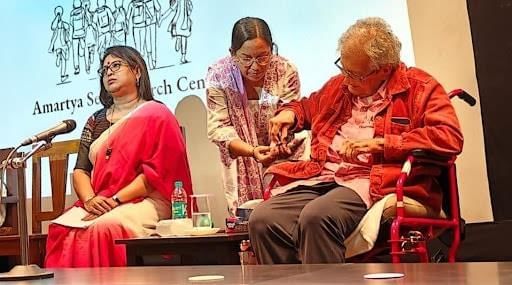 Why in News?
Why in News?
NITI Aayog has published a report titled Rethinking Homestays: Navigating Policy Pathways, which outlines a framework for States to harmonize regulations and foster an inclusive homestay ecosystem. This report emphasizes the significant economic potential of alternative accommodations like homestays and Bed and Breakfast (BnB) in promoting sustainable tourism growth.
Key Takeaways
- India's travel and tourism sector is recovering post-pandemic, significantly driven by domestic tourism.
- The sector contributed ₹21.15 lakh crore to the economy in 2024, a 21% increase from 2019.
- NITI Aayog's report provides a strategic roadmap to enhance local incomes and support community-based tourism.
Additional Details
- Economic Potential: Homestays can stimulate sustainable growth, create local jobs, and encourage entrepreneurship, particularly in rural and semi-urban regions.
- Cultural Value: They offer travelers authentic experiences, merging cultural immersion with livelihood opportunities.
- Policy Goal: To outline a strategic roadmap for States to integrate homestays as a vital component of India's tourism landscape.
- Core Recommendations: The report suggests a light-touch regulatory framework, digital empowerment through a centralized portal, capacity building for hosts, and financial incentives focused on destination-level support.
The model policy framework aims to simplify processes, integrate technology, and enhance cultural authenticity, positioning homestays as a means for regional development rather than merely accommodation. NITI Aayog's initiative calls for harmonized state policies, digital integration, and targeted incentives to unlock the full potential of the homestay sector while preserving cultural heritage and local livelihoods.
GS2/International Relations
India Redefines Engagement with Africa in Namibia
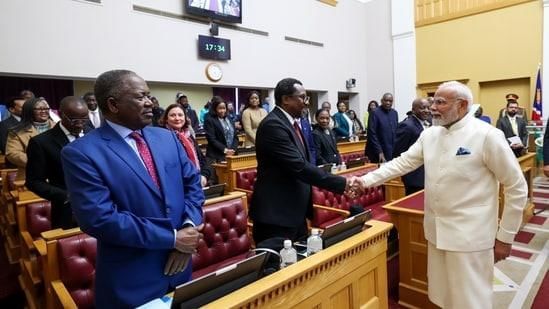 Why in News?
Why in News?
Prime Minister Narendra Modi's address to Namibia’s National Assembly in July highlighted a culturally rooted approach to diplomacy, demonstrating a shift from traditional Western methods of engagement with African nations.
Key Takeaways
- Modi's visit emphasizes a culturally sensitive diplomatic style, contrasting with Western conditional aid approaches.
- India's three-step logic in engaging Namibia includes shared history, ongoing cooperation, and future collaboration.
- Namibia's political stability and resources make it a strategic partner for India.
- Modi's visit resulted in agreements on entrepreneurship, health, and Namibia's accession to international coalitions, though more could be achieved.
Additional Details
- Shared History: India recalls its support for Namibia’s liberation struggle, reinforcing its image as a long-term partner.
- Current Cooperation: Ongoing trade is modest at $800 million but is backed by a $12 billion Africa-wide development partnership.
- Future Road Map: India's strategy includes knowledge-based cooperation, exemplified by Namibia adopting India's Unified Payments Interface (UPI).
- Modi's visit, while symbolically important, yielded modest outcomes including two MoUs and participation in global coalitions.
- Discussions on critical minerals, essential for India’s low-carbon supply chains, did not result in concrete agreements.
- India's diplomatic approach fosters trust through inclusive dialogue and respect for African priorities, distinguishing it from Western transactional methods.
In conclusion, while India’s engagement with Namibia presents a promising model of trust-based diplomacy, its credibility will hinge on consistent follow-through, strategic investment, and sustained commitment to partnerships.
|
290 docs|142 tests
|
FAQs on Weekly Current Affairs (15th to 24th August 2025) - Weekly Current Affairs - UPSC
| 1. What is wastewater surveillance and how is it used in public health? |  |
| 2. What are the implications of removing ministers under serious charges in a government? |  |
| 3. How did Kerala achieve the status of the first digitally literate state in India? |  |
| 4. What are the key highlights of the UGC draft curriculum that emphasizes ancient wisdom in higher education? |  |
| 5. Why is the overhauling of India's Vocational Education and Training (VET) system essential for national development? |  |
















